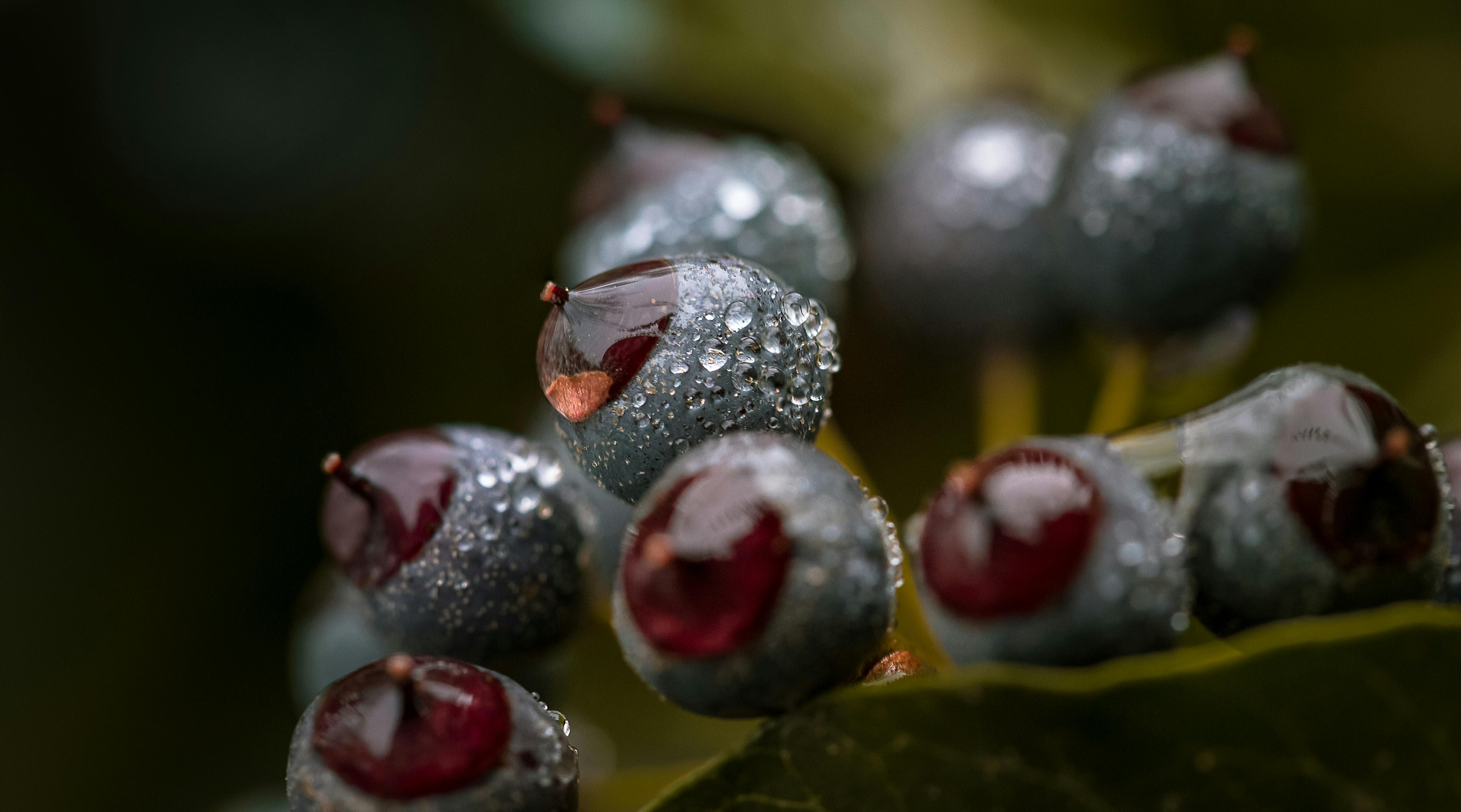Blueberry plants need lots of water to produce sweet, juicy fruit. Knowing how much water to give your blueberry plants can be the difference between a successful harvest and a failed one. In this article, we will discuss how much water blueberry plants need and how to ensure they get it in the right way.Blueberry plants need at least 1 inch of water per week, either from rainfall or irrigation. To ensure optimal growth and production, water blueberry plants deeply once a week during the growing season. It is important to water blueberries early in the day so that their leaves have time to dry before nightfall.
Weather Conditions
Weather conditions can have a big impact on the water requirements of blueberry plants. In dry, hot weather, blueberry plants require more frequent watering than in wetter, cooler climates. Additionally, if the weather is windy, the soil can dry out more quickly and will require more frequent watering. During periods of heavy rainfall, it may be necessary to reduce the amount of water that is applied to blueberry plants in order to prevent them from overwatering.
Soil Type
The type of soil that a blueberry plant is planted in can also affect its water requirements. Sandy soils tend to drain quickly and therefore require more frequent watering than clay or loamy soils which have better water retention capabilities. Additionally, if a soil has good organic matter content it can also help to retain moisture and reduce the need for frequent watering.
Fertilizer Use
Fertilizer use can also affect the water requirements of blueberry plants. If too much fertilizer is applied to a plant, it may lead to increased transpiration and therefore require more frequent watering. Additionally, some types of fertilizers may contain salts which can also increase the need for additional water.
Plant Age
The age of a blueberry plant can also affect its water requirements. Young plants are often more sensitive to drought stress and therefore require more frequent watering than older plants which have established root systems that are better able to access deeper water sources. Additionally, different varieties of blueberry plants may have different optimal watering schedules depending on their specific needs.
Calculating the Amount of Water for Blueberry Plants
Growing blueberry plants requires the right amount of water to ensure healthy growth and optimal fruit production. Knowing how much to water your blueberry plants is essential for keeping them healthy and productive. Fortunately, calculating the amount of water needed for your blueberry plants is relatively simple.
First, you need to determine the size and type of soil in which your blueberry plants are growing. Sandy soils are more porous and require more frequent watering than clay soils, which tend to hold more water. If you’re unsure about the type of soil in your garden, consider getting a soil test done to help you determine the best watering schedule for your plants.
Once you know what type of soil you have in your garden, you can calculate how much water your blueberry plants need. In general, blueberry plants require 1-2 inches of water every week during their growing season (April through September). To ensure that each plant receives an adequate amount of water, divide this total by the number of blueberry plants in your garden. For example, if you have 10 blueberry plants in your garden, each plant should receive 1/10th or 0.1 inches of water per week.
When watering your blueberries, make sure to use a slow trickle or soaker hose rather than a spray nozzle from a garden hose or sprinkler system. This will help prevent runoff and ensure that all parts of each plant get enough moisture without overwatering any one spot. Additionally, be sure to check the moisture level in the soil before watering; if it still feels damp an inch below the surface, skip that watering session and wait until it feels dry before reapplying water again.
By following these simple steps, you can easily calculate the amount of water needed for your blueberry plants and ensure they receive just what they need throughout their growing season!
When and How Often to Water Blueberry Plants
Watering blueberry plants is an important factor in achieving good yields. It is important to provide enough water for the blueberry plants to thrive, but not so much that the soil becomes waterlogged. The amount of water needed depends on the weather, soil type, and other factors. Generally, blueberry plants should be watered two to three times a week during the growing season. During periods of low rainfall or high temperatures, they may need to be watered more frequently. If rainfall is adequate, supplemental watering may not be necessary.
When watering blueberry plants, it is important to give them a deep soak rather than a light sprinkle. This encourages deep root growth and helps prevent root rot and other plant diseases. The soil should be moistened several inches below the surface and the plant should receive at least 1-2 inches of water each time it is watered. In most cases, it is best to use drip irrigation or soaker hoses for optimal results.
Blueberries also benefit from mulch such as straw or grass clippings placed around the base of the plant. Mulch helps retain moisture in the soil and prevents weeds from growing around your plants. Additionally, it can help keep soil temperatures consistent during hot summer months and protect roots from temperature extremes in winter months.
Overall, blueberry bushes require regular watering throughout their growing season in order to produce healthy fruit and achieve maximum yields. It is important to pay attention to weather conditions and adjust your watering schedule accordingly to ensure that your plants get enough water without being over-watered or under-watered.
Best Times of Day to Water Blueberry Plants
Watering blueberry plants is essential for optimal growth and fruit production. The best times of day to water blueberry plants are early in the morning or late in the evening. Watering in the morning helps prevent diseases such as powdery mildew, while late evening watering reduces water loss due to evaporation. During hot weather, it is best to water early in the day so that the foliage has time to dry out before nightfall. It is important to avoid wetting the foliage too much as this can cause fungal infections and reduce fruit production.
When watering blueberry plants, it is important to ensure that the soil is moist but not soggy. Over-watering can lead to poor root growth and can also increase susceptibility to pests and diseases. To check if your blueberry plants need watering, insert your finger about two inches into the soil near the base of the plant. If it feels dry then your plant needs more water. By watering at the right times of day you will be able to keep your blueberry plants healthy and productive.

Understanding Soil Types and Their Effect On Water Requirements for Blueberry Plants
Soil type is an important factor in determining the water requirements of blueberry plants. Different soil types have different water holding capacities, which can affect the amount of water that a plant needs. Sandy soils tend to have lower water holding capacities, while clay soils have higher water holding capacities. This means that plants growing in sandy soils will need more frequent watering than those growing in clay soils. Additionally, soil composition can also affect drainage and aeration, both of which can influence a plant’s water needs.
Organic matter content also plays an important role in determining soil type and its effect on blueberry plants’ water requirements. Soils with higher organic matter content tend to hold more moisture, making them better suited for growing blueberries. Organic matter also helps to improve soil structure and increase aeration so that oxygen and nutrients can reach the roots of the plants more easily.
Soil pH is another factor that affects the water needs of blueberry plants. The ideal pH range for blueberries is between 4.0 and 5.5, so it is important to adjust your soil accordingly if you want to grow healthy plants. Additionally, acidic soils tend to be lower in nutrients than neutral or alkaline soils, so it may be necessary to supplement your soil with additional fertilizer if you are growing blueberries in acidic soils.
Finally, it is important to consider climate when assessing the water needs of blueberry plants. Plants growing in warm climates will require more frequent watering than those grown in cooler climates since they will lose moisture more quickly due to heat and evaporation. Additionally, areas with high humidity will require less frequent watering than those with low humidity as there will be less moisture lost through evaporation.
By understanding different soil types and their effect on a plant’s water requirements, you can ensure that your blueberry plants receive the right amount of moisture for optimal health and growth. With careful consideration of these factors, you can help ensure that your blueberries thrive!
Mulching
Mulching is an effective way to help improve soil moisture retention for blueberry plants. Mulch helps insulate the soil and prevent water loss, while also preventing weeds from competing with the blueberry plants for moisture. When mulching, a layer of organic material such as shredded bark or pine needles should be spread around the base of the plants. Be sure to leave a few inches of space between the mulch and the stem of the plant to prevent rotting.
Irrigation
To maintain adequate soil moisture for blueberry plants, regular irrigation is essential. Check soil moisture levels at least once a week, using a soil probe or even just your finger. If necessary, irrigate in the morning or early evening when temperatures are cooler and less water will be lost to evaporation. Drip irrigation systems can also be used to ensure that water is applied slowly and evenly over time.
Planting in Raised Beds
Planting blueberry plants in raised beds can help improve soil moisture retention. Raised beds are slightly elevated areas in which soil is built up above its original level, providing better drainage and improved air circulation. When planting in raised beds, use well-draining soils such as sandy loams or peat moss mixes.
Amending Soil
Adding organic matter such as compost or manure to existing soils can help improve their ability to retain moisture. Compost is especially beneficial because it consists of decomposed organic materials which help increase the amount of water-holding capacity in soils. Be sure to mix compost into existing soils at least 6 inches deep before planting blueberry plants.
Avoid Overwatering
Though it is important to keep soils consistently moist, overwatering can be detrimental to blueberry plants as it can lead to root rot and other issues caused by excessive moisture levels. When watering your blueberries, give them enough so that they are fully hydrated but not overly saturated with water.
1. Overwatering
One of the most common mistakes when watering blueberry plants is overwatering. Overwatering can be detrimental to the health of your plants, as it can lead to root rot and other issues. It is important to water only when necessary and not too often. Too much water can also cause the soil to become compacted, which can impede root growth and cause nutrient deficiencies in the plant. When watering blueberry plants, always check the soil before adding more water and make sure it is not already saturated.
2. Not Watering Enough
The opposite problem can also be a problem – not watering enough. Blueberry plants need a consistent amount of moisture in order to thrive, so make sure you are providing them with enough water each week. If the soil is dry, then it’s time to add more water. Check the soil around the roots of your plants about an inch deep each week and add more water if needed.
3. Inconsistent Watering
Inconsistent watering can also be an issue when caring for blueberry plants. Inconsistent watering can lead to stressed plants that are unable to properly absorb nutrients from the soil and may become prone to diseases or pests. To avoid this issue, create a regular schedule for watering your blueberry plants and stick to it as closely as possible.
4. Not Adjusting For Temperature Changes
Another common mistake when watering blueberry plants is not adjusting for temperature changes throughout the year. In hot weather, your plants will need more frequent watering than in cooler weather as they use up more moisture due to evaporation from higher temperatures. Be sure to adjust your watering schedule accordingly with changing temperatures throughout the year.
5. Using Tap Water
Finally, many people make the mistake of using tap water when watering their blueberry plants, which can contain chlorine or other chemicals that may be harmful for your plants over time. To ensure that you are providing your blueberries with clean and safe water, use rain water or filtered water whenever possible when irrigating your blueberries..

Conclusion
Watering blueberry plants is an important part of the cultivation process. Depending on the climate, soil type, and age of the plant, the amount of water will vary. Generally, blueberry plants should receive at least 1 inch of water per week. During hotter months or periods of drought, it may be necessary to increase watering frequency. Additionally, mulching helps to preserve soil moisture and reduce evaporation. By understanding how much water your blueberry plants need and providing consistent care, you can ensure that they remain healthy and productive for years to come.
In conclusion, blueberry plants require a consistent amount of water in order to thrive. The amount needed varies depending on the climate and soil type but generally 1 inch per week is recommended. Mulching can also help to retain moisture in the soil and reduce evaporation. By providing adequate amounts of water and mulch when needed, you can ensure that your blueberry plants remain healthy and productive for many years to come.



